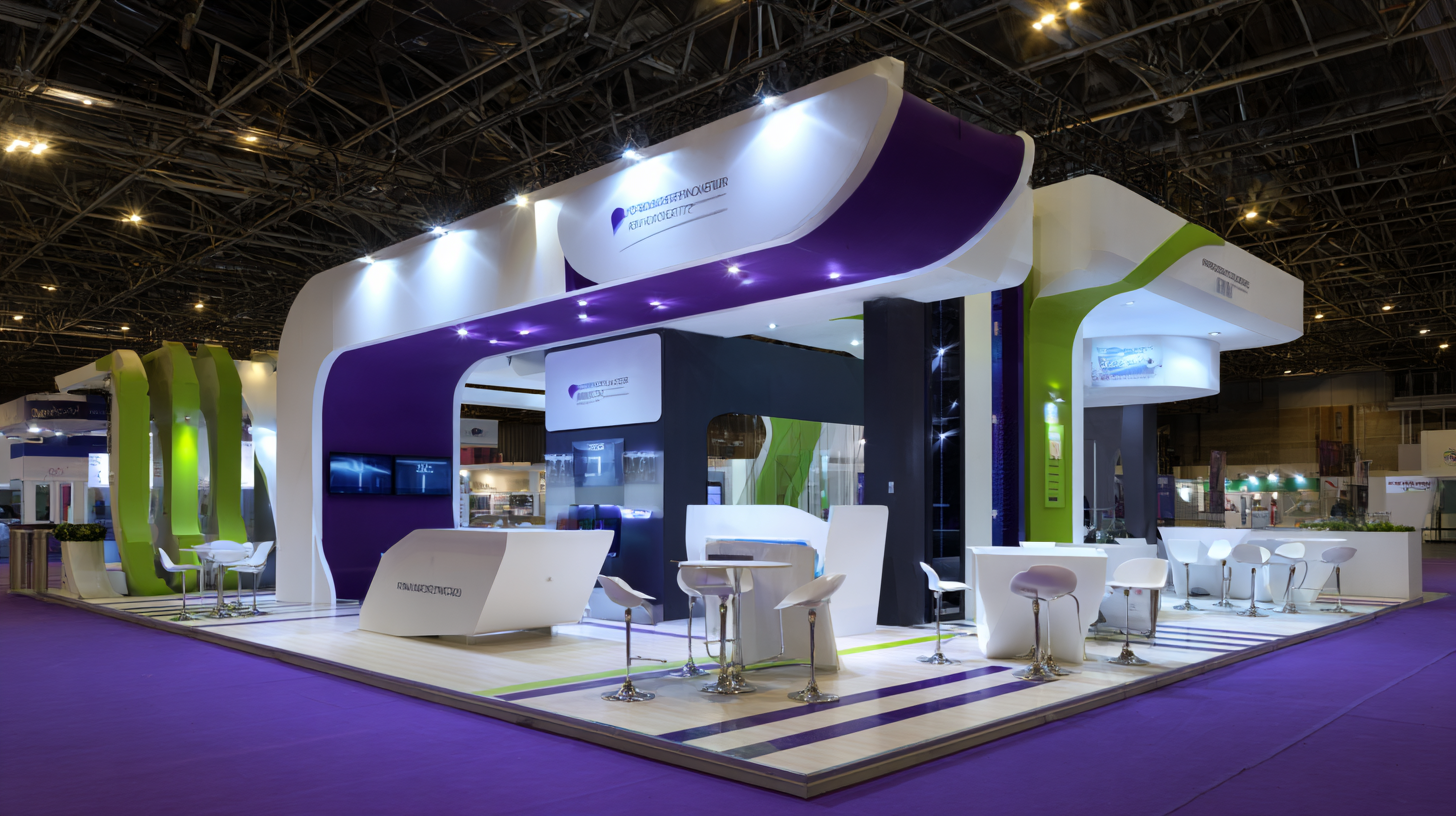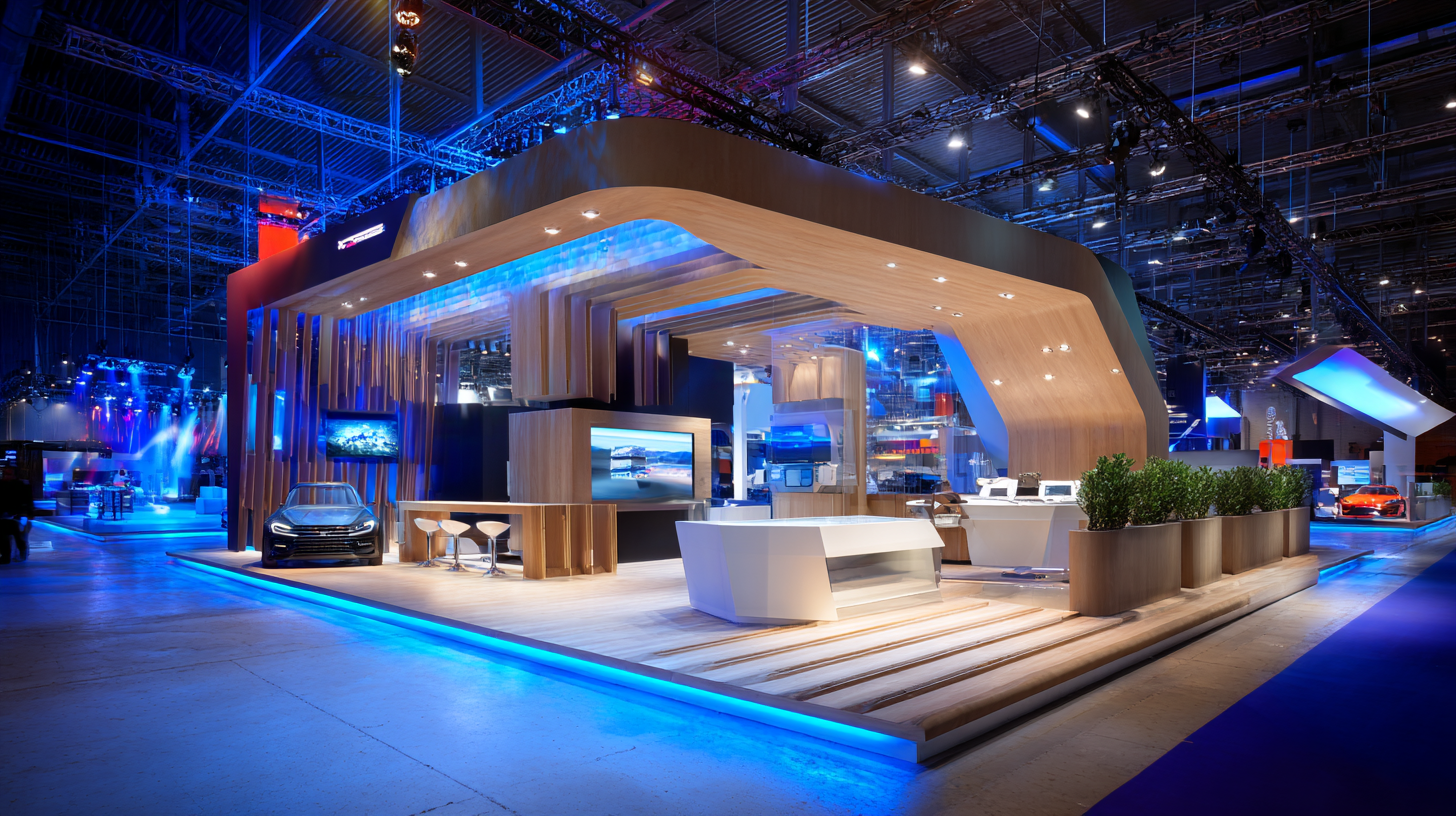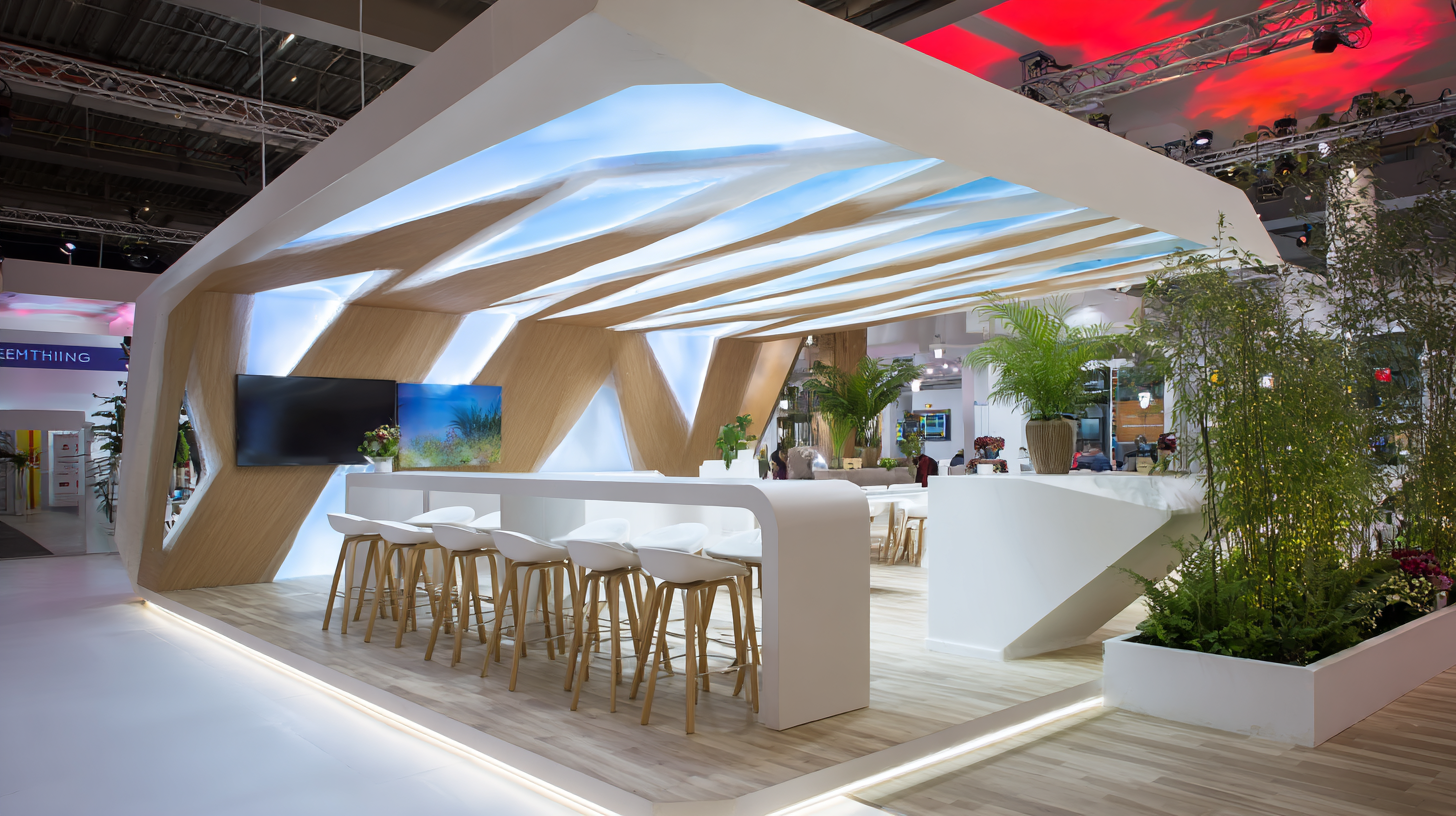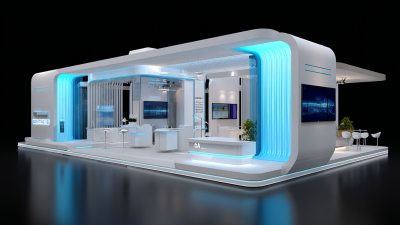
In the competitive landscape of modern marketing, the importance of a well-executed Exhibition Design Stand cannot be overstated. According to recent reports, companies that invest in high-quality exhibition designs see a 30% increase in visitor engagement and brand recall compared to their less visually appealing counterparts. With nearly 80% of trade show attendees making purchasing decisions during their visit, the design of your exhibition stand serves as a crucial touchpoint for brand interaction.
 Additionally, studies indicate that brand presence and perception can improve significantly when the stand design incorporates innovative technologies and interactive elements. As brands seek to differentiate themselves in crowded marketplaces, effective exhibition design transforms not only the appearance of their space but also amplifies their overall brand presence, establishing lasting connections with potential customers.
Additionally, studies indicate that brand presence and perception can improve significantly when the stand design incorporates innovative technologies and interactive elements. As brands seek to differentiate themselves in crowded marketplaces, effective exhibition design transforms not only the appearance of their space but also amplifies their overall brand presence, establishing lasting connections with potential customers.
Innovative exhibition design has a profound impact on brand recognition, particularly in a marketplace increasingly influenced by consumer values such as sustainability. Statistics indicate that brands that prioritize visually appealing and eco-conscious exhibit designs see a marked increase in customer engagement and loyalty. For instance, studies show that a well-designed exhibition booth can enhance brand recall by up to 70%, making it imperative for companies to invest in creative strategies that align with contemporary consumer expectations.

In a landscape where Generation Z is driving the demand for sustainable practices, brands that incorporate these values into their exhibition designs resonate more effectively with their target audience. This demographic not only seeks out products that align with their ethical beliefs but also influences others within their circles to adopt similar purchasing behaviors. As a result, integrating innovative and sustainable exhibition design can significantly elevate a brand’s presence, highlighting its commitment to social responsibility and environmental stewardship, ultimately contributing to broader brand recognition and loyalty.
Effective exhibition design plays a crucial role in enhancing visitor engagement. According to a report by the Event Marketing Institute, 85% of attendees engaged with the brand's content when it was presented in an immersive environment. This highlights the importance of creating a compelling backdrop that not only captures attention but also fosters meaningful interactions. When a booth is designed with visitor experience in mind, it allows brands to stand out in competitive environments, which is essential in today’s visual-driven market.
Furthermore, research from the Center for Exhibition Industry Research (CEIR) indicates that 76% of exhibitors believe that live events lead to increased brand awareness. Well-executed booth designs encourage visitors to spend more time interacting with products and services, resulting in a deeper understanding of the brand and its offerings. The use of technology, such as interactive displays and virtual reality, can further enhance engagement, pushing the boundaries of traditional exhibition strategies. Brands that leverage effective exhibition design reap the benefits of higher visitor retention and enhanced brand perception.
| Engagement Metric | Percentage (%) |
|---|---|
| Increase in Brand Recall | 75 |
| Visitor Interaction Time | 60 |
| Increase in Lead Generation | 50 |
| Positive Feedback from Visitors | 80 |
| Social Media Engagement Increase | 70 |
In the realm of modern exhibition design, digital technology plays a pivotal role in enhancing viewer experience and transforming brand presence. According to a report by Statista, 75% of exhibitors consider technology an essential component of their exhibition strategy, highlighting its significance in captivating audiences. With innovations such as augmented reality (AR) and virtual reality (VR), brands can create immersive experiences that allow potential customers to engage with products in a dynamic way. For instance, AR can enable viewers to visualize how a product fits into their real-life scenarios, making the interaction not just informative but also memorable.
Moreover, the integration of interactive digital displays has shown to significantly boost engagement levels. A study by Exhibit Surveys revealed that booths utilizing interactive content attract 67% more visitors than those that do not. These displays not only provide audiences with instant information but also invite them to participate actively in the brand narrative. As competition intensifies in trade shows and exhibitions, leveraging digital technology becomes indispensable for brands aiming to stand out and forge a lasting impression on their audience.
Effective exhibition stands are not just a space to display products; they serve as a critical component of brand strategy, shaping perceptions and driving engagement. Research conducted by the Center for Exhibition Industry Research reveals that well-designed exhibition stands can enhance brand recall by up to 38%. This underscores the importance of investing in design elements that not only attract visitors but also leave a lasting impression.
Moreover, a study by Exhibition Services & Contractors Association indicates that over 70% of trade show attendees are more likely to buy from a vendor that they interacted with on an impressive stand. This directly correlates the design of an exhibition stand with return on investment (ROI). In fact, companies that prioritize exhibition stand design report a 44% increase in lead generation within the first six months post-event. Such data-driven insights highlight the impact of effective exhibition design in enhancing visibility, engagement, and ultimately, sales performance for brands in competitive markets.
Exhibition design plays a crucial role in brand transformation, with numerous case studies highlighting its impact on company visibility and engagement. According to a report from the Center for Exhibition Industry Research (CEIR), 83% of attendees believe that trade shows are a great way to gather information about new products. This statistic underscores the importance of strategic exhibition design that not only attracts visitors but also communicates a brand's message effectively.
One notable example is the rebranding of a leading tech company, which redesigned its exhibition space to incorporate immersive experiences. By utilizing interactive displays and modern aesthetics, the brand saw a 45% increase in booth traffic compared to the previous year, leading to a 30% rise in post-show sales. This demonstrates how a well-thought-out exhibition design can turn a booth into a powerful marketing tool, enhancing the overall brand perception among potential clients.
Similarly, a prominent health and wellness brand implemented a holistic approach to their exhibition stand, integrating sensory elements such as scent and sound with product demonstrations. The results were striking, with an increase in audience engagement rates by 60%. These case studies highlight that strategic exhibition design can do more than attract visitors; it can create memorable experiences that resonate with audiences and significantly boost brand presence.







